It may be hard to believe, but millions of years ago Kansas was part of a huge inland sea. Traveling across the western half of the state, it is not an ocean that comes to mind. It takes excursions off of the interstate to expose the true history of the region. We made a visit to the Sternberg Museum of Natural History, in Hays, to get a look at life in dinosaur days. Time to break out our explorer gear and do a deep dive into our state’s watery side of history.
We want to thank Visit Hays and the Sternberg Museum for hosting our visit. Rest assured all opinions are our own.
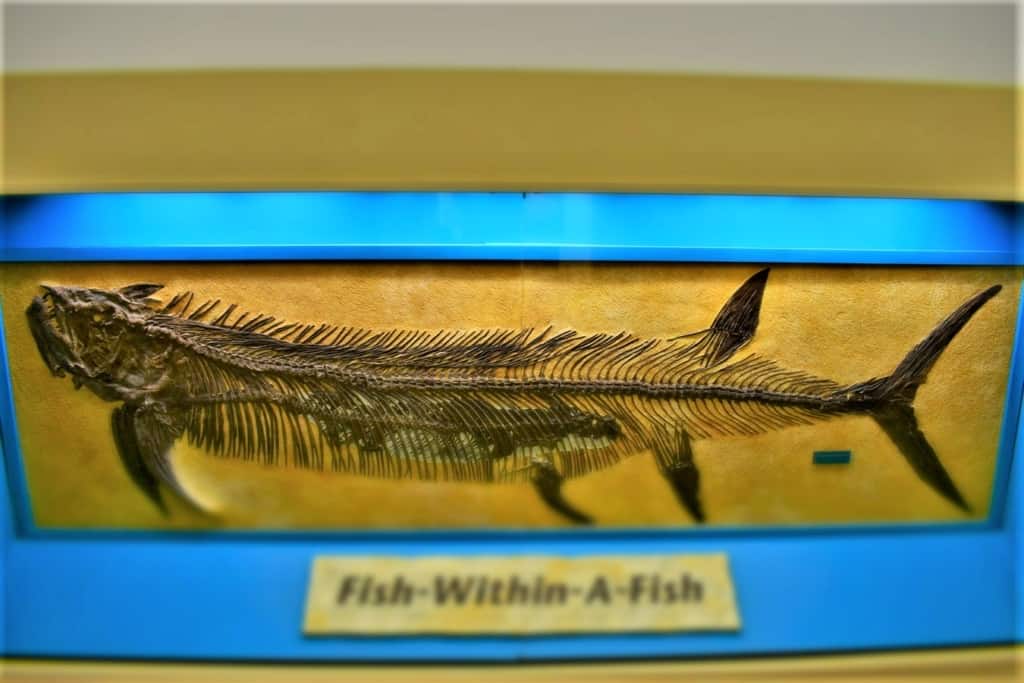
Famous Fishes
We picked the Sternberg Museum since it is known worldwide for its collection of fossils. With over 23,000 cataloged artifacts, it would take a lot of time to explore it all. Knowing the liquified history of Kansas, we expected to find a lot of fish fossils. We learned that over the eons, the water level would rise and fall, which allowed the inhabitants to vary. During the wetter periods, the inland sea would average around 600 feet deep. You can imagine the abundance of fish that would have been present. In fact, one of the most popular fossils at the museum is the “Fish-Within-A-Fish”.
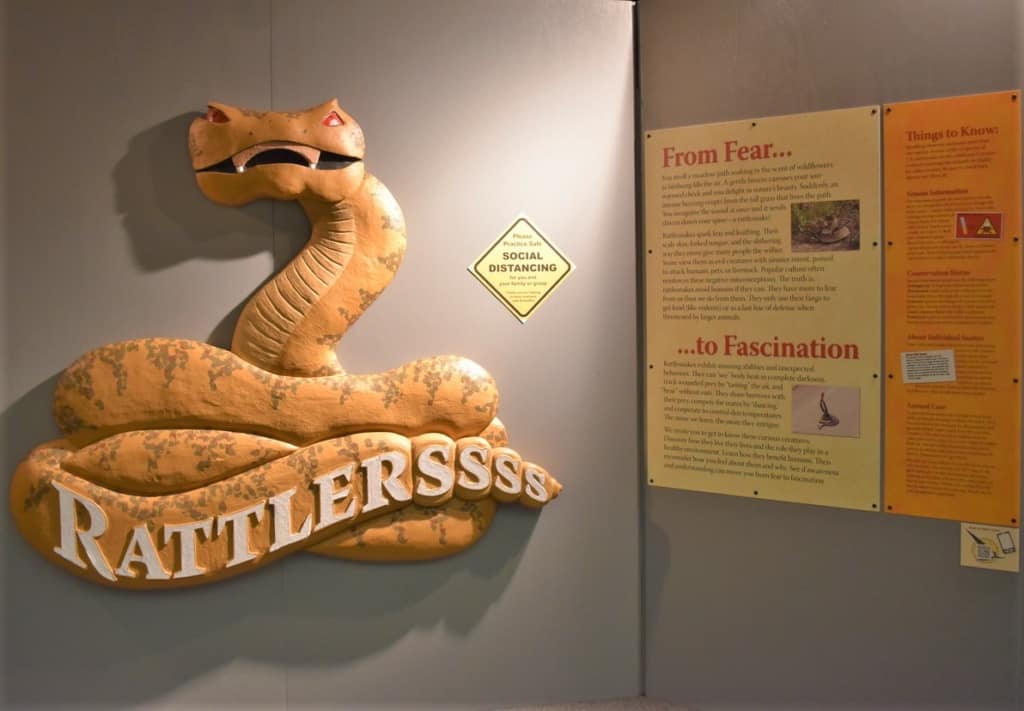
Multi-Faceted Exhibits
After checking out the world-famous fossil, it was time to look into their traveling exhibit. When doing my research, I somehow had missed that Sternberg has rotating exhibits. We have found that many museums include this feature. It’s a great way to expand our education about a subject we were not expecting. Another example was finding sunken Egyptian artifacts during a stop at the St. Louis Art Museum. It goes to show that you never know what you will find when you enter a museum.
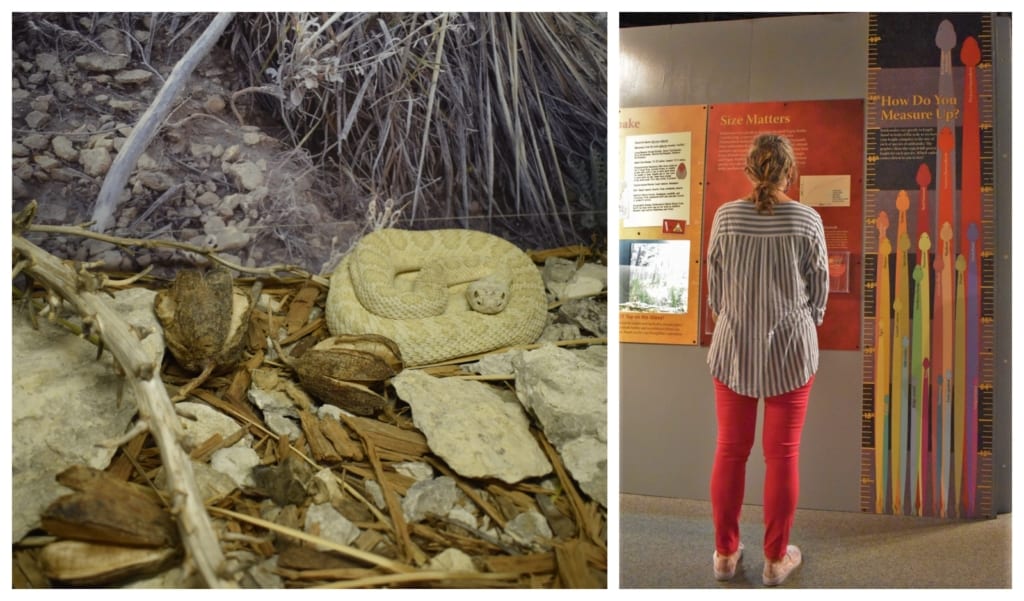
Temporary Visitors
Having panes of glass between us and these vipers allowed for some up-close inspections. The Sternberg Museum not only showcased a lot of snakes, but they included a plethora of educational information. Various placards explained how these cold-blooded creatures play their part in the ecosystem. A billboard showed us how we measured up to the king of the crop. Clearly, there are some monsters out there in the world.
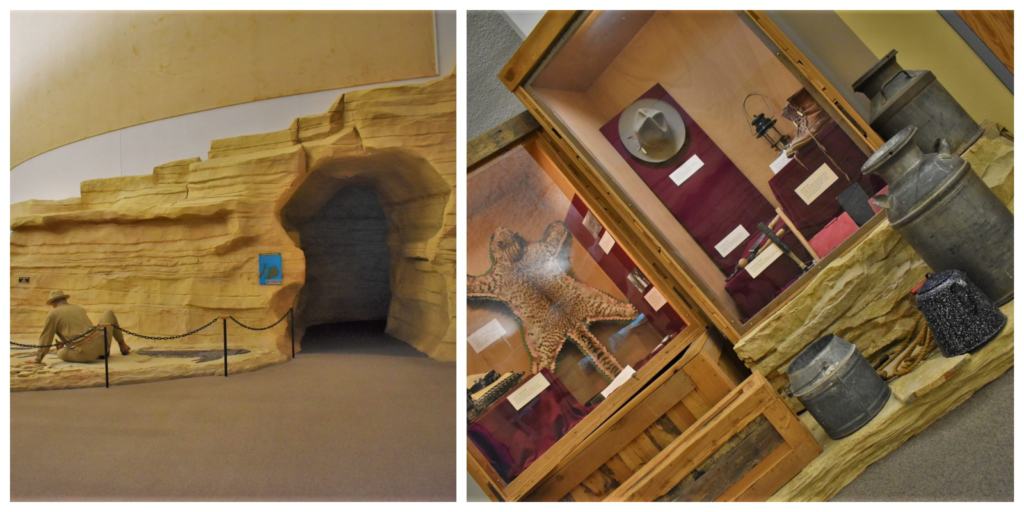
Welcome to Base Camp
With that interesting addition tucked away in our memories, it was time for the main feature. The big draw for us was diving into life in dinosaur days in what would become Kansas. The entrance to this portion of the exhibits begins at the base camp. Here we would find artifacts that hint at how researchers live while in the field. A diorama of a scientist uncovering a fish fossil leads the way into the underwater adventure.
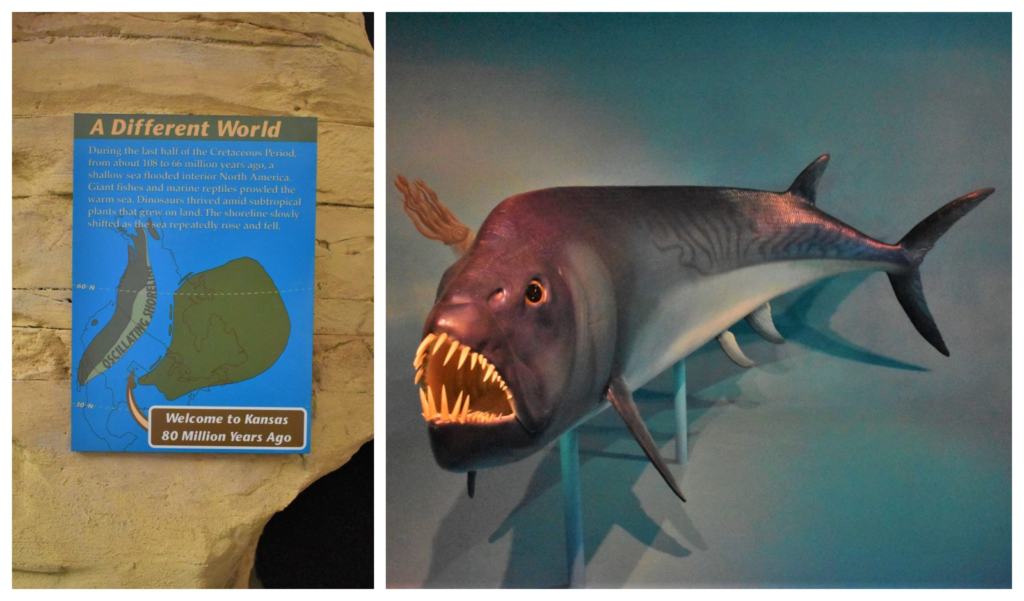
Diving Into the Kansas Sea
The tunnel entrance propelled us back in time to the Cretaceous Period. We found ourselves immersed in the underwater world that occupied the region 100 million years ago. Huge sea creatures swim by with ferocious teeth and obvious predator features. The seabed is covered with giant clams, ammonites, and crinoids. Mosasaurs, sharks, and plesiosaurs are the kings of these waters and spend their days in pursuit of fish.
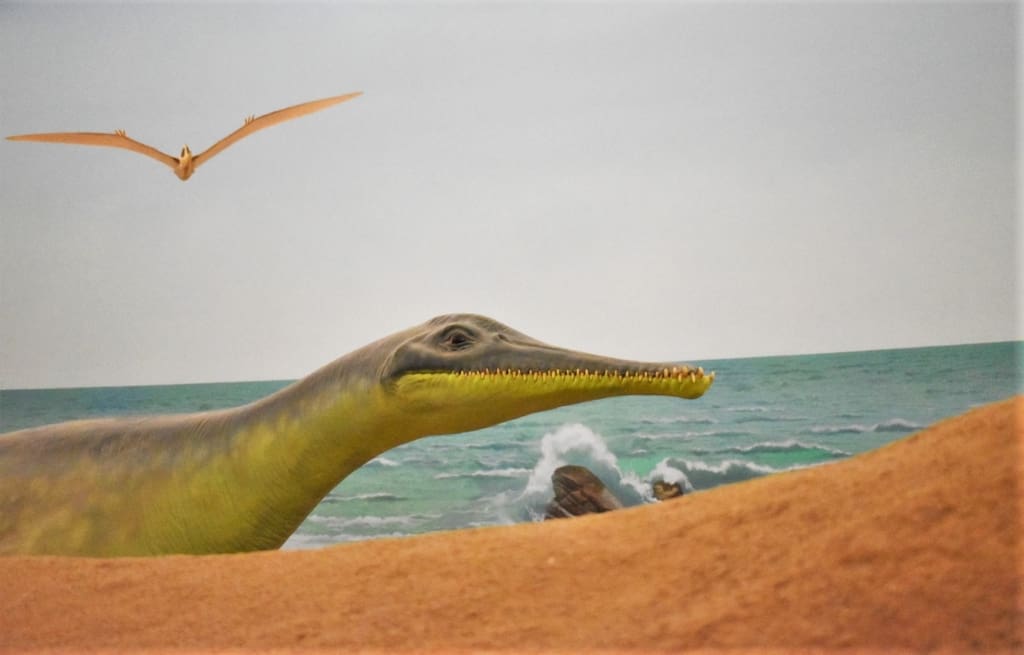
Hitting the Kansas Beaches
Not all of the land is covered and along the eastern edge, the land rises above the water. Rocky beaches offer temporary relief from the ever-present threats of swimming predators. Of course, there were also threats from above. Huge Pterosaurs glided across the skies looking for food below. Plant eating dinosaurs with bony armor grazed along the swampy grounds that bordered the inland sea. Some plant-eaters, like the duck-billed Claosaurus, were as comfortable on land as they were in the water.
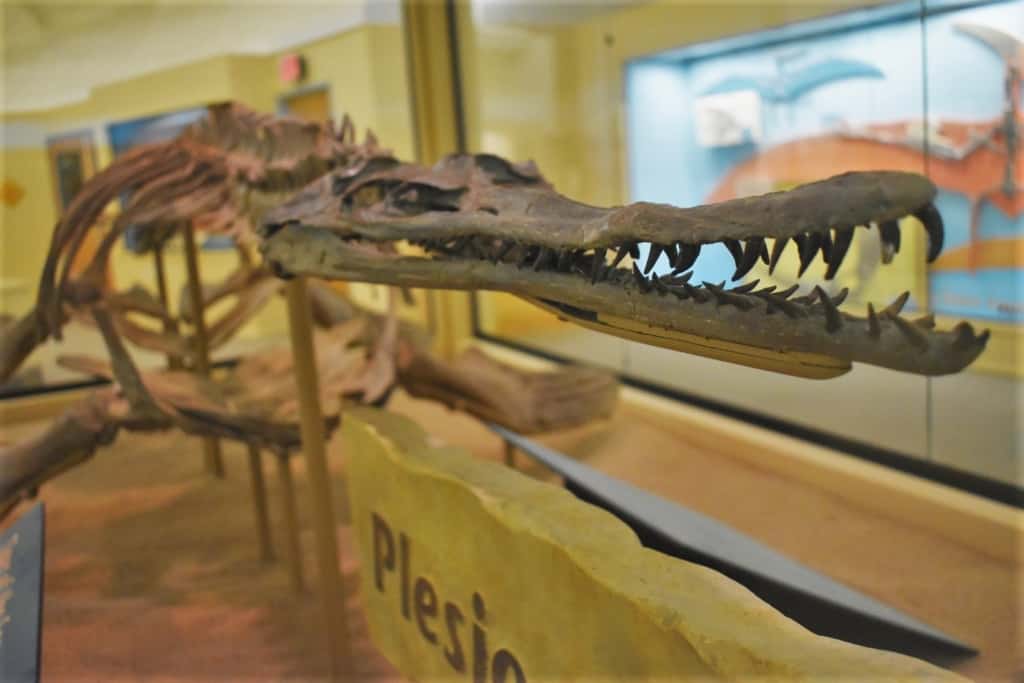
Toothy Residents
In the fossil gallery, we had seen evidence of these “toothy” creatures that prowled the waters. It was easy to imagine the peril that awaited the unwary fishes swimming along in schools. The Plesiosaur was certainly high on the list of predators. Its long neck and broad body made it a formidable opponent underwater. I can picture it darting through a school of fish, waving its toothy jaws side-to-side, as it captured unexpecting prey. It certainly makes you glad that these creatures are extinct.
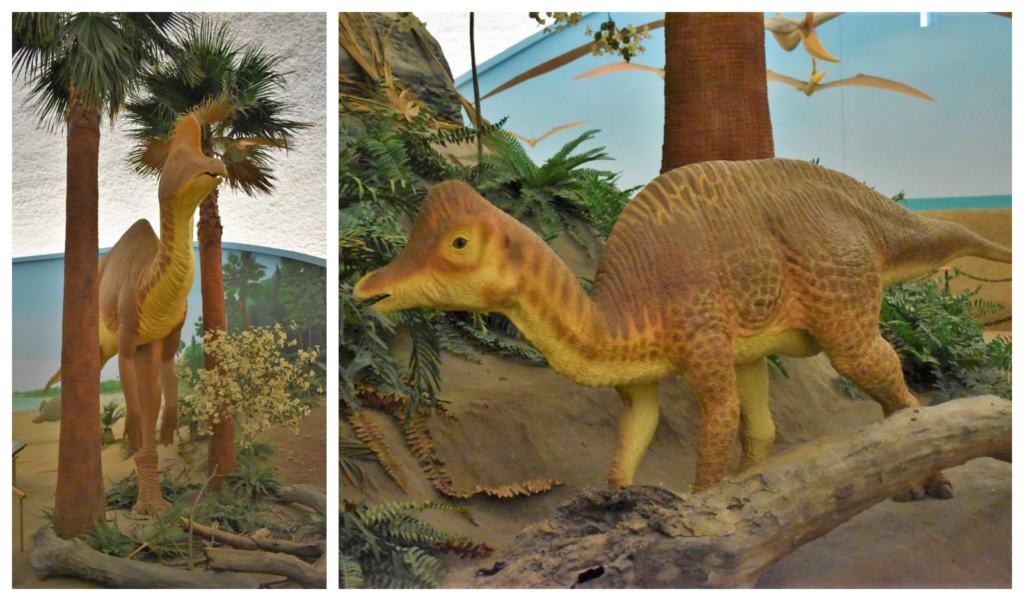
Life in Dinosaur Days
We had moved beyond the underwater exhibit and back onto dry land. As we made our way into the heart of the dome, we met our old friend, Claosaurus. Here was a young one grazing on plants, under the watchful eye of his parent. We stayed on the path, as Pterosaurs cruised overhead. While the various fossils had given us a glimpse into life in dinosaur days, these full-scale models offered another perspective. Seeing the creatures like this helped us picture the amount of vegetation needed to keep them all fed.
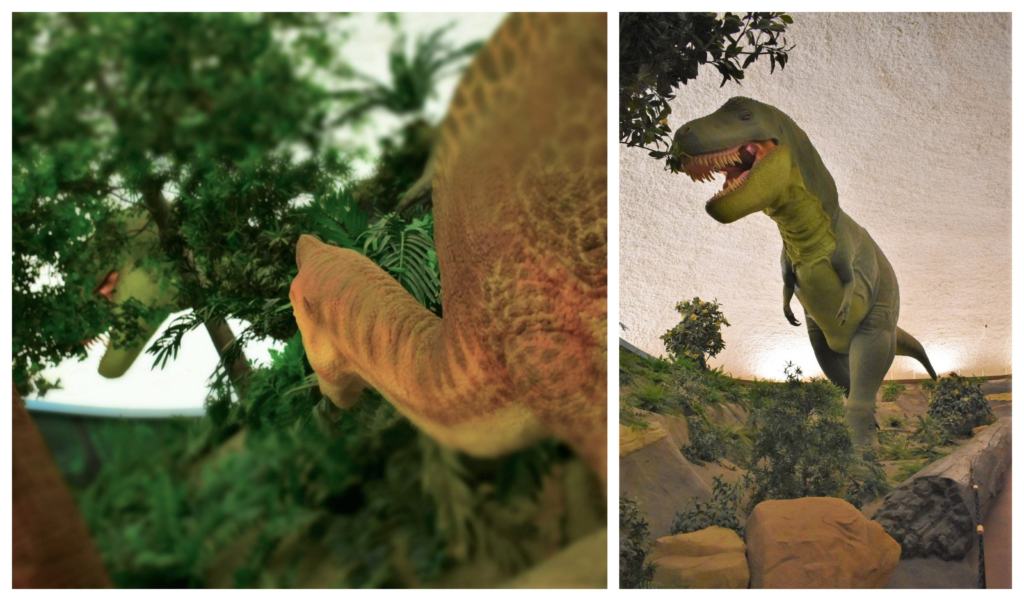
Keeping a Low Profile
On the other side of the treeline, danger lurked in the form of a T-Rex. We could be sure that this little dinosaur would have been the perfect snack size for such an imposing predator. It was likely that these plant-eaters stayed close to the shoreline, so a quick escape could be made into the water. Of course, then they would have been potential victims of the underwater flesh-eaters. We made our way around the path to get a closer look at the T-Rex on the hunt. Knowing that the Sternberg Museum works to keep the models in scale helped us imagine the amazing arsenal of teeth that this creature brought to bear on its victims.
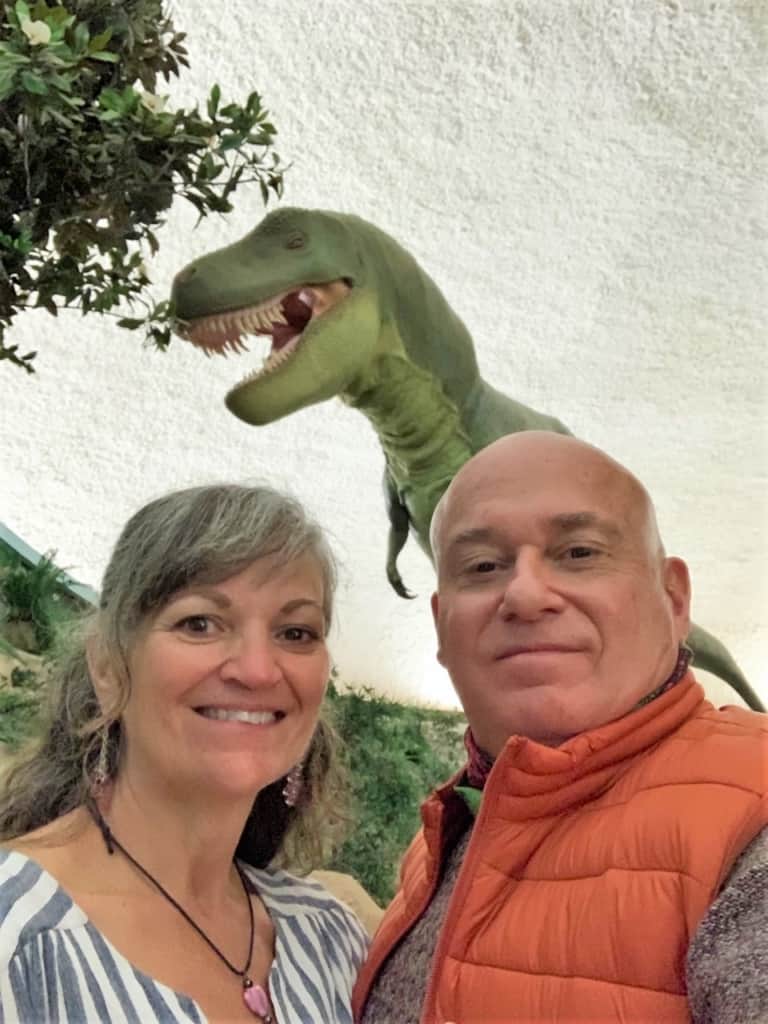
Taking It All In
In the end, we decided that the process of the hunter and hunted was one that has been repeated for millions of years. It was just reassuring to know that we would not be the next in line to wind up in a T-rex stomach. We returned to our explorations and turned our attention back to the wide range of fossils that are on display. While I could spend days examining all of the artifacts, our time had run out for this visit. More of Hays, Kansas was waiting to be discovered. We thanked the staff for their hospitality and left knowing more about the Kansas sea than we had ever expected to learn.


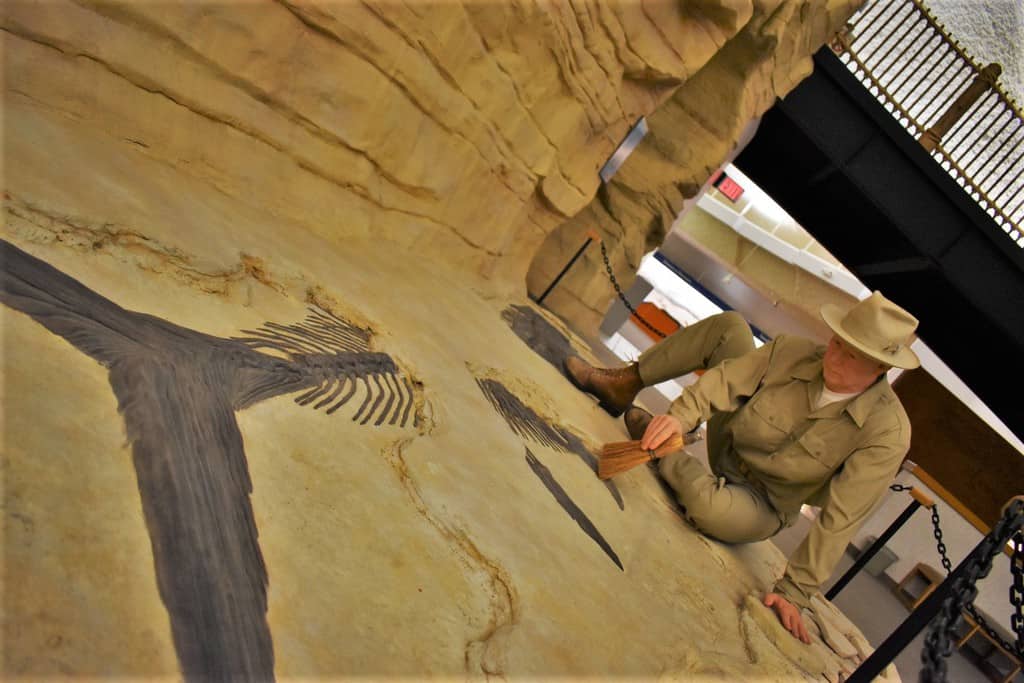
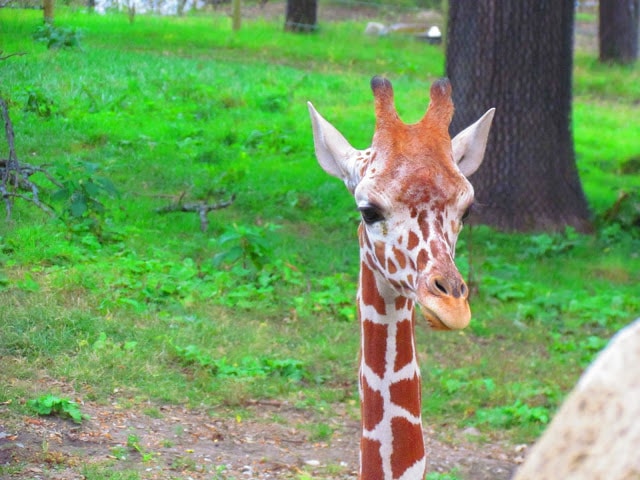

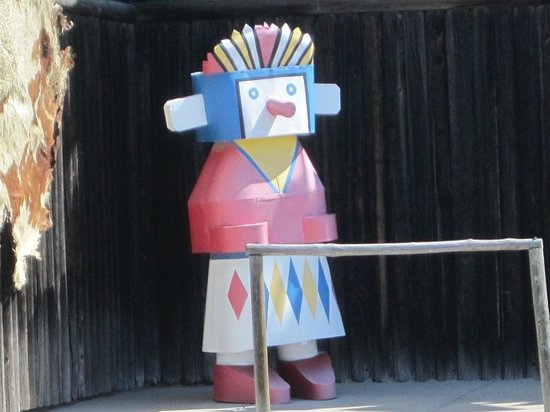
Wow, this is another one we will go to on our regular trek to Kansas to visit family. I should remember to go off the interstate and visit Hays and life in those dinosaur days!
We are betting the two of you would enjoy a visit.
I was intrigued by the building’s architecture even before I (you) got in the door! What an interesting collection. Kids and grandkids would love this!
We saw a few kids in attendance and they seemed to be quite intrigued by the exhibits.
You sure do know how to find unusual museums! The Sternberg Museum of Natural History in Hays, Kansas, looks to be a great way to view some dinosaur fossils. I myself was intrigued by the fish fossil in your photograph.
Our continued education is fulfilled by finding unique subjects at a variety of destinations. It works great for expanding our horizons.
Imagine that — a sea in Kansas! You’re so right about getting off the interstate to make some great finds. You did well finding the Sternberg Museum — interesting place.
So true. While the interstates help connect destinations, it’s what’s inside each town and city that make up the real treasures.
How interesting! I’d never thought of Kansas as an area rich with fossils…
It can be surprising what we find when we head out the door.
You find the most interesting of places – thanks for this post.
So glad you enjoy discovering them, as well.